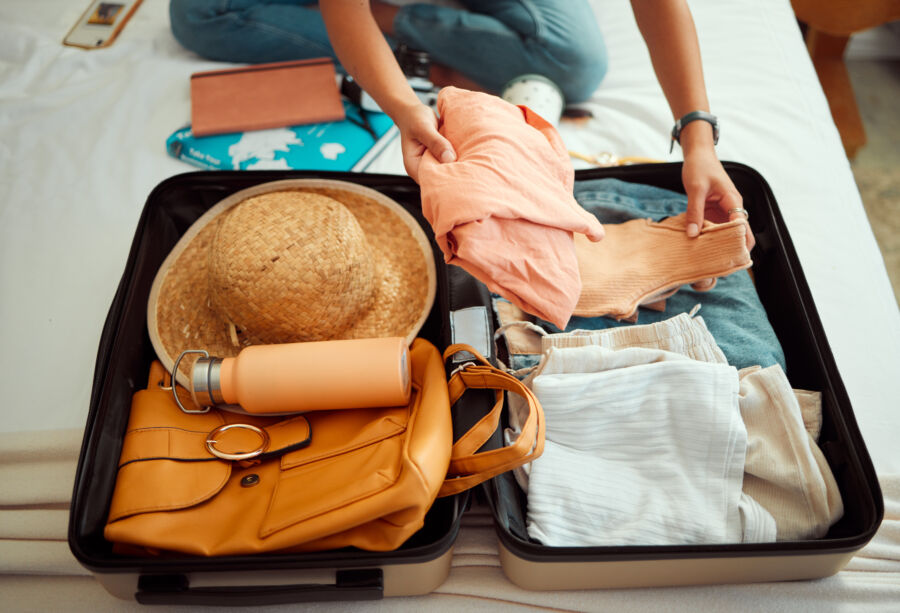
Frequent Bathroom Breaks on Road Trips: Tips for a Smooth Journey
A well-planned road trip can be thrilling, but frequent bathroom breaks can quickly become a hassle. Whether exploring new cities or racing down highways, this common issue can disrupt your journey and stress your travel plans. There’s no need to let an overactive bladder spoil your fun.
Timing your bathroom breaks thoughtfully can make a huge difference. Stopping every two to three hours allows you to stay on schedule and avoid accidents.
It’s also important to monitor your fluid intake. Cutting back on hydrating may seem like a good idea, but it can result in concentrated urine, leading to more urgent trips.
Travel planning is all about finding comfort and convenience on the go. With strategic planning and clever tricks, you can keep those bathroom breaks from becoming a bother. Let’s dive into how you can make your next road trip smoother and more enjoyable!
Key Takeaways
- Thoughtful timing of bathroom stops can help.
- Monitoring fluid intake is crucial.
- Strategic travel planning enhances comfort.
Table of Contents
- What Are The Triggers?
- Dietary Choices
- Behavioral Factors
- Physiological Aspects
- Plan Your Fluid Intake
- Hydration Strategies
- Alcohol and Caffeine Management
- Strategic Planning
- Navigation and Itinerary
- Packing Essentials
- Comfort and Convenience
- Clothing and Accessories
- Selecting the Right Seat
- On-the-Road Solutions
- Health and Wellness
- Bladder Training Techniques
- Pelvic Floor Exercises
- Stress Management and Support
- Book Your Dream Experience
- More Travel Guides
What Are The Triggers?

When you’re on a road trip, several things can make you need to use the bathroom more often. These triggers can come from what you eat and drink, your habits, and how your body works.
Dietary Choices

Caffeine, alcohol, and carbonated drinks are known to make you go more often. Caffeine and alcohol act as diuretics, which means they make your body produce more urine.
Spicy foods and citrus can irritate your bladder, leading to more frequent trips. Even some fruits, like tomatoes, can be culprits.
Pay attention to what you consume before and during the trip. Opt for water or non-caffeinated, non-alcoholic alternatives, and avoid these triggers.
Behavioral Factors

Sometimes, it’s not just what you eat or drink but how you behave. If you get anxious about finding a restroom, anxiety can make you feel like you need to go more often. When you think about needing to pee, it is often as if your brain convinces your bladder it’s full.
Taking regular pit stops and planning them can help reduce anxiety. Be mindful of not overdrinking – especially just before you hit the road. Also, try not to hold it too long, as this can weaken your bladder muscles over time.
Physiological Aspects

If you have an overactive bladder, you will naturally have to go more often. Stress and sitting for long periods can make it worse. Your body is designed to move, so your bladder may become more sensitive when cramped in a car for hours.
Remember, your body might also react to the jostling and bumps of travel. Staying hydrated is important, but try to get enough water consistently throughout the day. If you know you have a bladder condition, plan accordingly with easy bathroom access points.
Plan Your Fluid Intake

Staying hydrated is important, but managing when and how much you drink can help control bathroom breaks. Here are some strategies to help you stay comfortable and on the road longer.
Hydration Strategies

Balancing how much you drink is key. Start drinking plenty of water a few hours before your trip, then taper off closer to your departure.
This keeps you hydrated without needing to stop as much. Pack a refillable water bottle and take small sips throughout the trip instead of gulping down large amounts at once.
Timed voiding can also be helpful. This means planning your bathroom breaks ahead of time, like stopping every two hours.
It helps manage your bladder’s schedule and reduces the urgency. Eating water-rich foods like fruits, such as watermelon or oranges, can help keep you hydrated without needing to drink as much.
Alcohol and Caffeine Management

Caffeine and alcohol can increase the need to pee. Try to limit or avoid drinks like coffee, tea, beer, or cocktails before and during your trip.
If you need a caffeine boost, drink smaller amounts and combine it with plenty of water. This helps reduce the impact on your bladder.
Keep an eye on other caffeinated drinks too, like soda, which can also be a culprit. Remember, it’s not just about what you drink but also when and how much. Make mindful choices to make your road trip smoother and more enjoyable.
Strategic Planning

Mapping out your route and packing the right stuff can make your road trip smoother. With proper planning, you can minimize discomfort and avoid constant stops.

First things first, plan your route. Knowing where you’re headed and where the rest stops are can save you a lot of trouble. Use apps or GPS to find rest areas, gas stations, and even scenic spots for breaks.
Another tip is to be flexible with your itinerary. While having a schedule is good, being too rigid can add stress. Allow time for unexpected stops—you never know when the urge might hit! Plus, these breaks can be great opportunities to stretch and enjoy the scenery.
Packing Essentials

Packing well can be a game-changer. Aim to have an emergency kit ready, which includes items like medications, wet wipes, and hand sanitizer.
Don’t forget to pack snacks and fruits with high water content, like grapes or watermelon. These keep you hydrated without making you rush to the bathroom.
Carry an empty bottle if you can’t reach the restroom in time. And though it might sound obvious, wear comfortable clothes. Tight clothing can make bladder discomfort worse.
Comfort and Convenience
Staying comfortable and prepared is key to enjoying your road trip. This includes what you wear, where you sit, and how you handle bathroom breaks.
Clothing and Accessories

Opt for comfortable clothing that allows you to move freely, like loose pants and breathable tops. Tight clothes can restrict movement and cause discomfort.
Packing extra underwear is a must. These are handy if you face unexpected stops or want to freshen up during a longer trip.
Absorbent pads are another useful addition to your travel kit, especially if traveling with kids or anyone with an Overactive Bladder (OAB). They help manage accidents and keep everyone feeling dry and comfortable.
A simple diaper-changing kit with hand sanitizer, a changing pad, and extra clothes ensures smooth travel, especially if you have young kids.
Selecting the Right Seat

Your seat choice can make a big difference. An aisle seat gives you easy access to restrooms, making it a smart pick for frequent bathroom breaks.
For drivers, ensuring your seat is adjusted for comfort can help prevent back and leg pain. Use a cushion or backrest if needed.
Passengers should use travel pillows and blankets for added comfort. They provide support and make it easier to rest, which is especially important on longer journeys.
During breaks, stretch your legs to prevent stiffness. This is especially important if you’re sitting for long periods.
On-the-Road Solutions

Portable urinals are a game changer for road trips. These can save the day when you’re stuck in traffic or far from a restroom. For women, travel urination devices like the Shewee let you go discreetly and comfortably without squatting.
Plan your rests at well-maintained stopovers. A good restroom can make a big difference, especially when traveling with kids or elderly passengers.
Using absorbent pads or wearing an adult diaper can provide peace of mind. This is especially useful for those with bladder control issues or when clean bathrooms aren’t readily available.
Don’t forget to pack hand sanitizer and wipes for quick clean-ups. Keeping a small trash bag can also help manage waste along the way.
Health and Wellness

Taking care of your health during road trips involves more than just planning bathroom breaks. Learn how bladder training, pelvic floor exercises, and stress management can help improve your travel experience.
Bladder Training Techniques

Training your bladder can make a big difference on long trips. Start by tracking how often you need to go. Use a log to note the time between trips.
Gradually extend this time by 15 minutes. This practice can help reduce the urge over time.
Absorbent liners can offer reassurance if you’re worried about accidents. Drinking smaller amounts of fluid more frequently helps keep you hydrated without overloading your bladder.
Pelvic Floor Exercises

Strengthening your pelvic muscles through Kegel exercises can help control the urge to urinate. The technique is simple: contract your pelvic muscles as if you’re trying to stop urination, hold for a count of five, then release. Repeating this several times a day strengthens these muscles.
You might also try the “freeze and squeeze” method. When you feel the urge, stop what you’re doing, contract your pelvic muscles, and hold until the urge passes. This can help reduce symptoms of an overactive bladder (OAB).
Stress Management and Support

Travel stress can make OAB symptoms worse. Deep breathing exercises can calm your mind and body.
Take a slow, deep breath through your nose, hold for a count of seven, and then slowly exhale through your mouth. This can help you manage the urge when it hits.
It’s also important to talk about your condition with your travel companions. Support from friends or family can make a huge difference.
Don’t be afraid to ask for a stop when needed; remember that taking care of your health is the priority. If symptoms persist, consult a healthcare provider.




Kai
Hey there fellow road trippers! This post about frequent bathroom breaks on road trips really hit home for me. I’ve definitely been in that situation where you’re cruising along and suddenly nature calls…again. It can be such a mood killer, right? I’m curious, has anyone tried those apps that show you where the cleanest rest stops are? I’ve heard mixed things. Also, I’m always on the lookout for good roadside diners that have decent bathrooms – any recommendations? Oh, and here’s a random question: what’s the weirdest bathroom situation you’ve encountered on a road trip? I once had to use an outhouse that was literally tilting to one side. Talk about an adventure in itself!